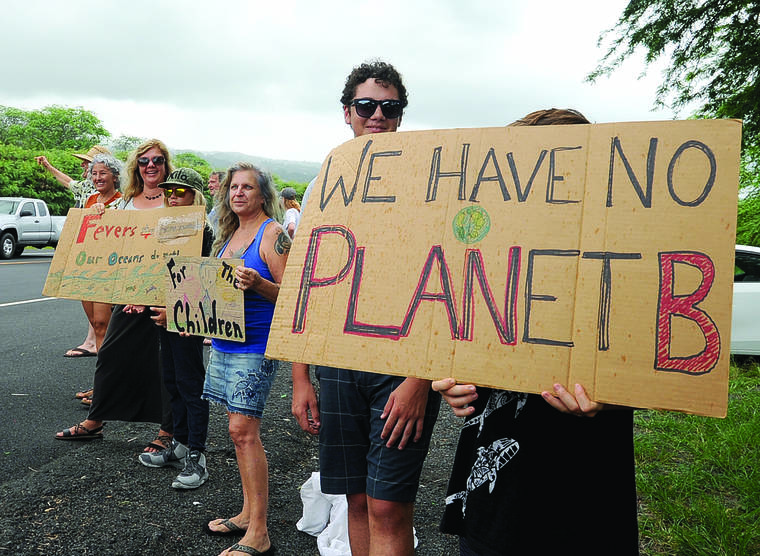At the urging of some 50 testifiers, a County Council panel Tuesday advanced a resolution committing to implement a “just, equitable, countywide emergency climate mobilization effort.”
“The County of Hawaii acknowledges that an existential climate emergency threatens humanity and the natural world,” states Resolution 322.
The resolution goes on to promote the reduction of carbon emissions through a number of initiatives to be implemented through a county climate action plan and the pursuit of adaptation strategies to proactively respond to disruptions in the community from sea level rise and weather disasters.
The Committee on Agriculture, Water, Energy and Environmental Management gave its favorable recommendation with a 7-0 vote, sending it to the full council for one final reading. Kohala Councilman Tim Richards and Hilo Councilwoman Sue Lee Loy were absent.
“What we are seeing, what we are speaking about is being spoken about in boardrooms, law schools, the United Nations,” said Kona Councilwoman Rebecca Villegas, who recently returned from New York City where she represented Hawaii County at Climate Week NYC, a collaboration of the city and the United Nations.
The council and the mayor are empowered by the county charter to declare public emergencies to protect life, health and property. The current Resolution 322 is nonbinding, as a bill for an ordinance is required for specific emergency declarations and actions at the council level, in particular those that require appropriations.
“It doesn’t have the force of law but it does have the force of kuleana asking our government to take action on this critical situation,” said resolution sponsor Hamakua Councilwoman Valerie Poindexter.
But speaker after speaker declared it a good start.
“Human activity always leaves a footprint and we have to be careful where we tread,” said Geoffrey Shaw of Keaau. “If paradise isn’t worth protecting, what is?”
“To not declare a state of emergency and to not do everything we possibly can to stop the irresponsible and dangerous trajectory we are on regards to climate is to fail our children and their children,” said Hawi resident Maya Parish.
“It’s impossible to address a problem unless you know it is a problem,” said Renee Siracusa, president of environmental nonprofit Malama O Puna.
Siracusa provided a list of 10 steps the county can take right now to address the climate emergency, from planting trees, installing solar panels and charging stations to lowering property taxes for conservation land and native forests.
Mary Marvin Porter of Keaa added the county should establish an environmental coordinator office to coordinate environmental issues among the various departments. Maui created that office, and the City and County of Honolulu created the Office of Climate Change, Sustainability and Resiliency.
State Sen. Russell Ruderman, a Democrat representing Puna and Ka‘u, praised the county for taking a stance on an issue that he said hasn’t been taken seriously enough by state and national leaders. He said the state initiated an aspirational long-term plan, but hasn’t done enough.
“A 30-year plan facing a five-year deadline is meaningless,” Ruderman said. “We’re the adults today; we’re the grown-ups.”
Two council members, however, worried the effort is too little too late.
Puna Councilwoman Ashley Kierkiewicz said mitigation will have to take priority over prevention, adding community buy-in will be essential. People say they support wind power and solar, but will they accept them in their backyard, she asked.
Hilo Councilman Aaron Chung was more somber.
“I just really believe it’s too late,” Chung said.
Email Nancy Cook Lauer at ncook-lauer@westhawaiitoday.com.






